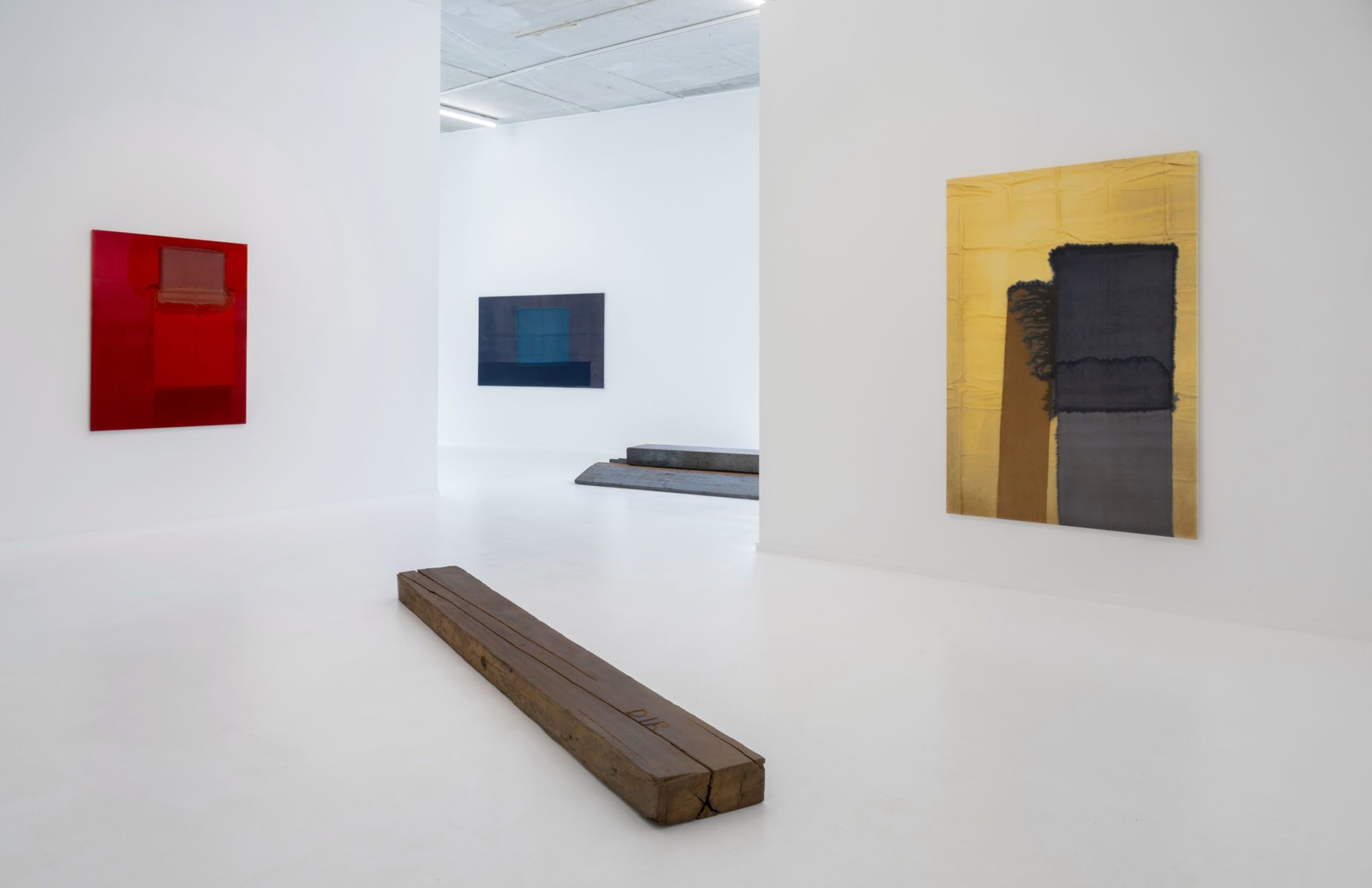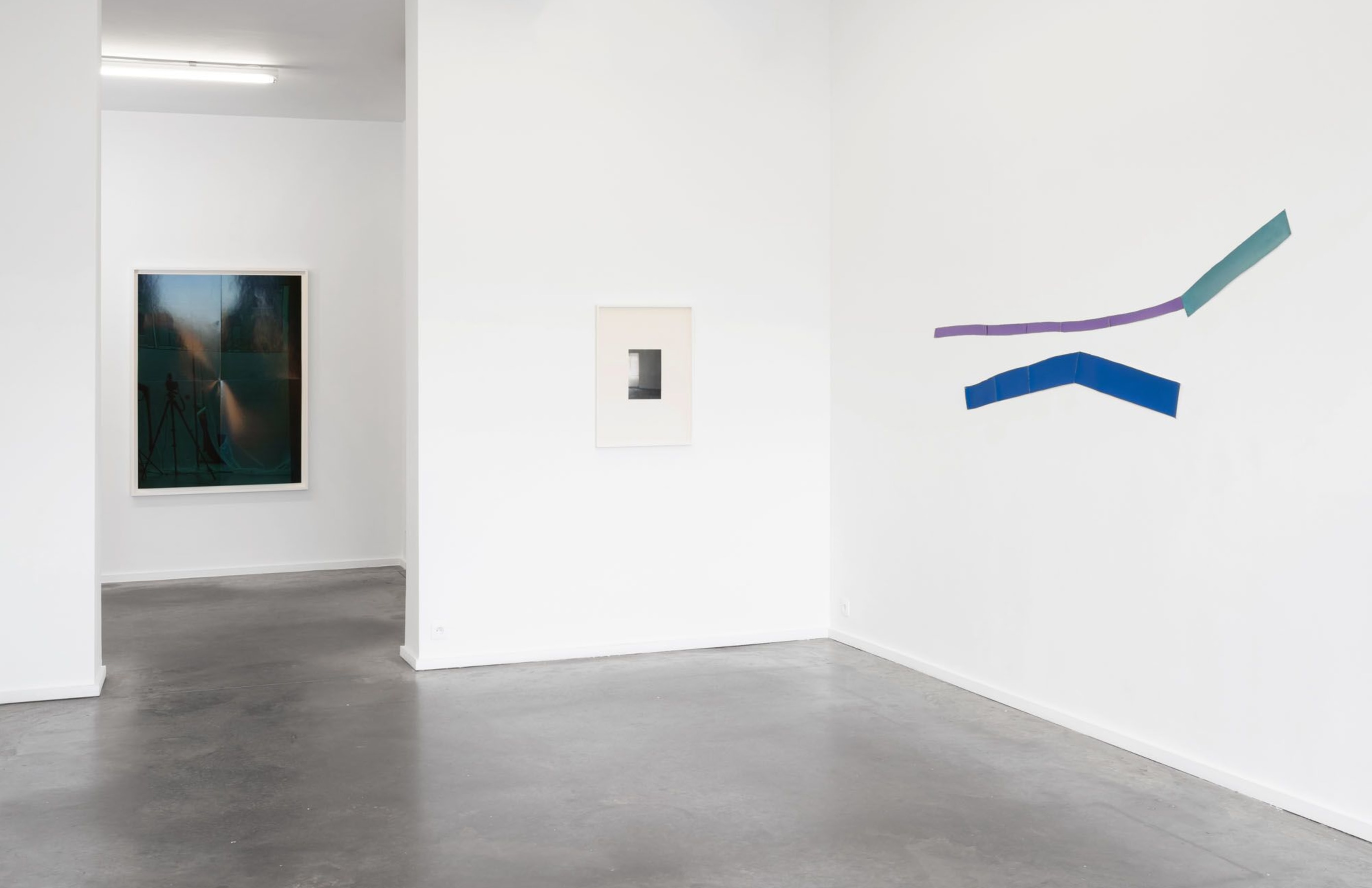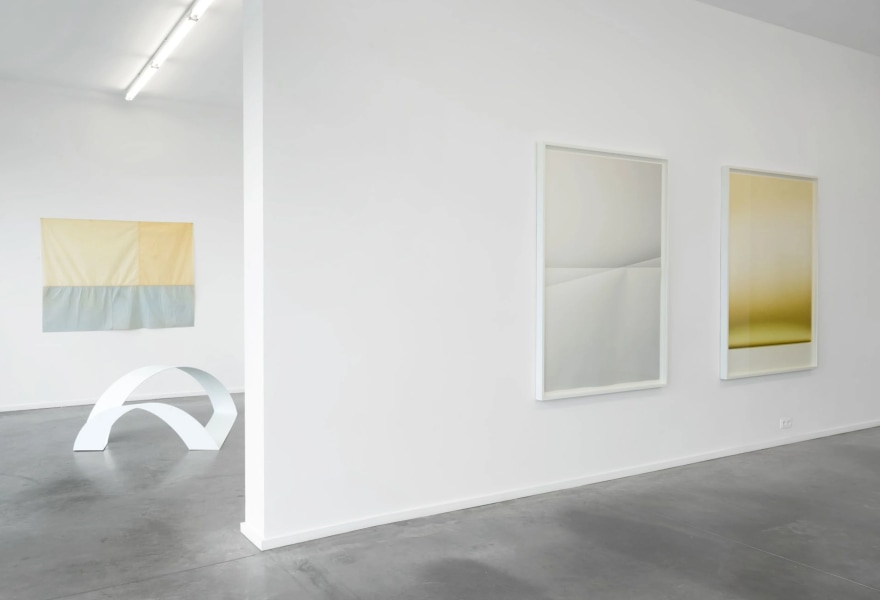Sofie Van de Velde presents two duo exhibitions: Bernd Lohaus with Sara Sizer and Guy Mees with Johanna von Monkiewitsch. Both duos consist of a deceased and contemporary artist. Their work surprisingly overlaps, with dialogue the enriches the artwork and enhances understanding.
Those who consider the work of Guy Mees (°1935–†2003) and Bernd Lohaus (°1940–†2010) to be fragile and poetic must not forget how radical and innovative their work was in the 60s and 70s. Lohaus diverged from traditional sculpture, opting for raw, unworked materials like wood and stone. He made subtle interventions, such as adding handwritten German words. This departure from the more polished and refined materials chosen by many of his contemporaries, as well as the inclusion of words, was unconventional at the time. Lohaus often favoured poetic, philosophical language. His work is visually and conceptually strong, inviting reflection on communication.
 Exhibition Voice-Calling-Echo-You, Bernd Lohaus (1940-2010) & Sara Sizer (b. 1957)
Exhibition Voice-Calling-Echo-You, Bernd Lohaus (1940-2010) & Sara Sizer (b. 1957)
Mees created delicate pieces using non-traditional materials like coloured paper scraps, lace and mesh, reflecting the transience and fickleness of life. With assembled paper strips, he creates rhythm and movement, engaging with the space. The viewer becomes attuned to the architecture and its significance. Both artists foster dialogue between artwork, viewer and the surroundings, encouraging alternative perspectives on and understanding of art.
In
Voice-Calling-Echo-You at Nieuw Zuid, we encounter sculptures by Bernd Lohaus and paintings by Sara Sizer (°1967). Sizer draws inspiration from Lohaus for her recent work, with titles like Voice, Calling, Answer and Stay referring to communication and exchange. Sizer applies liquid to folded velvet, first bleaching the fabric chemically, then painting it with pigments after it has been rinsed and dried. Unexpected patterns emerge, with colours bleeding together at the edges. The bleaching reveals traces of folds and creases in the fabric, showcasing various colour fields next to, on and behind each other.
Both Lohaus and Sizer opt for lived-in materials. The wood once served industrial purposes in the port of Antwerp, while the bleached velvet and flowing colours visually echo the wood's grain and discoloration. Lohaus barely manipulates the wood, instead grouping and stacking it. Gesture holds significance: we discern ‘DIR’ scratched into one of the beams, a direct appeal to the viewer. We also see a cardboard box treated with wax and bronze sculptures.
Sizer constructs her compositions similarly to Lohaus. Compared to his work, Sizer's appears sculptural, whereas Lohaus's draws attention to detail. Gaps between colour fields, wood fissures and open spaces in stacks cleverly interact. They seek connections between their assemblages, as well as the interstices or space surrounding them. This is evident in both the artwork and its presentation: Sizer's work hangs on the wall, while Lohaus's sculptures occupy the space. This dynamic interaction enriches their approaches.
 Exhibition Eucalyptus, Guy Mees (1935–2003) & Johanna von Monkiewitsch (b.1979)
Exhibition Eucalyptus, Guy Mees (1935–2003) & Johanna von Monkiewitsch (b.1979)
at Het Zuid showcases work by Guy Mees and Johanna von Monkiewitsch (°1979). It marks Von Monkiewitsch's debut at Sofie Van de Velde Gallery. Her work pays homage to light, composing with light and shadow. She folds supports, photographs them, then folds them again, capturing light at different times to generate diverse shadows, lines and planes. She also photographs empty frames with light and shadow, framing them afterwards. Several concrete works hang on the wall, also interacting with light, and she paints shadows previously observed. At the exhibition, intense lighting casts new shadows and planes on the work. She incorporates mother-of-pearl into the concrete, producing glimmers and additional light reflections. Von Monkiewitsch captures the forms light creates in a space, as seen in the sculpture shaped like a half-circle and the shadow it cast.
From Mees, Von Monkiewitsch has selected a few works of thin paper and from his lost space series. Mees cuts shapes from paper, occasionally using fabric, then arranges them into compositions. He subtly treats his paper with paint or pencil. He also photographs baseboards that he has painted. Regardless of the medium, his interventions seem to float in space. Both artists opt for subtle gestures and simplicity in material and presentation, yet demonstrate a multitude of possibilities. For Von Monkiewitsch, a choreography of light defines the image; for Mees, it's paper or other materials. They define space, delineating it. Their work outlines a space, illuminating or colouring it, but also drawing attention to residual spaces and absence of light or colour. They inspire reflection on how we perceive and experience space.
The works of both duos complement each other. Although comparable, there are enough differences to keep it engaging. Visual harmony enhances the aesthetic qualities of the work. A similar approach with different media and presentation methods offers conceptual depth, while the dialogue provide an interesting interplay between complementary reflections and insight on individual works.


